This week, a tour of the library. Not Lovecraft’s own and very large home Library, sadly. But rather the Providence Public Library which he had regularly visited and used since childhood. The following pictures of the Library are from somewhat disparate dates, and the library departments were moved around somewhat over time. But this is basically as he knew the building and its various service desks and rooms.
The entrance steps.
The information desk.
The card-index catalogue system, a primitive paper search-engine for book titles and topics.
Delivery desk, at which one might wait for a book that was not on the open shelves.
Trade and other local directories.
Reference reading room.
A reading room with newspapers.
A magazines and periodicals room, later — perhaps even the 1950s?
A dark staircase, with a watching window.
An upper corridor. Ahead may be the lecture room, while to the right we see a label painted on the glass door for “Children’s Library”.
Children’s rooms. A Lovecraft-alike boy is second from the right, at the front.
Lecture room.
A quiet study room.
The art room and skylights.
Meanwhile, down in the basement… ‘the stacks’. Lovecraft had a special ‘stacks’ library card and appears to have been permitted to descend. This picture may be much later, perhaps the late 1950s or 60s.
All from the Providence Public Library collection, with all but the final picture newly colourised.


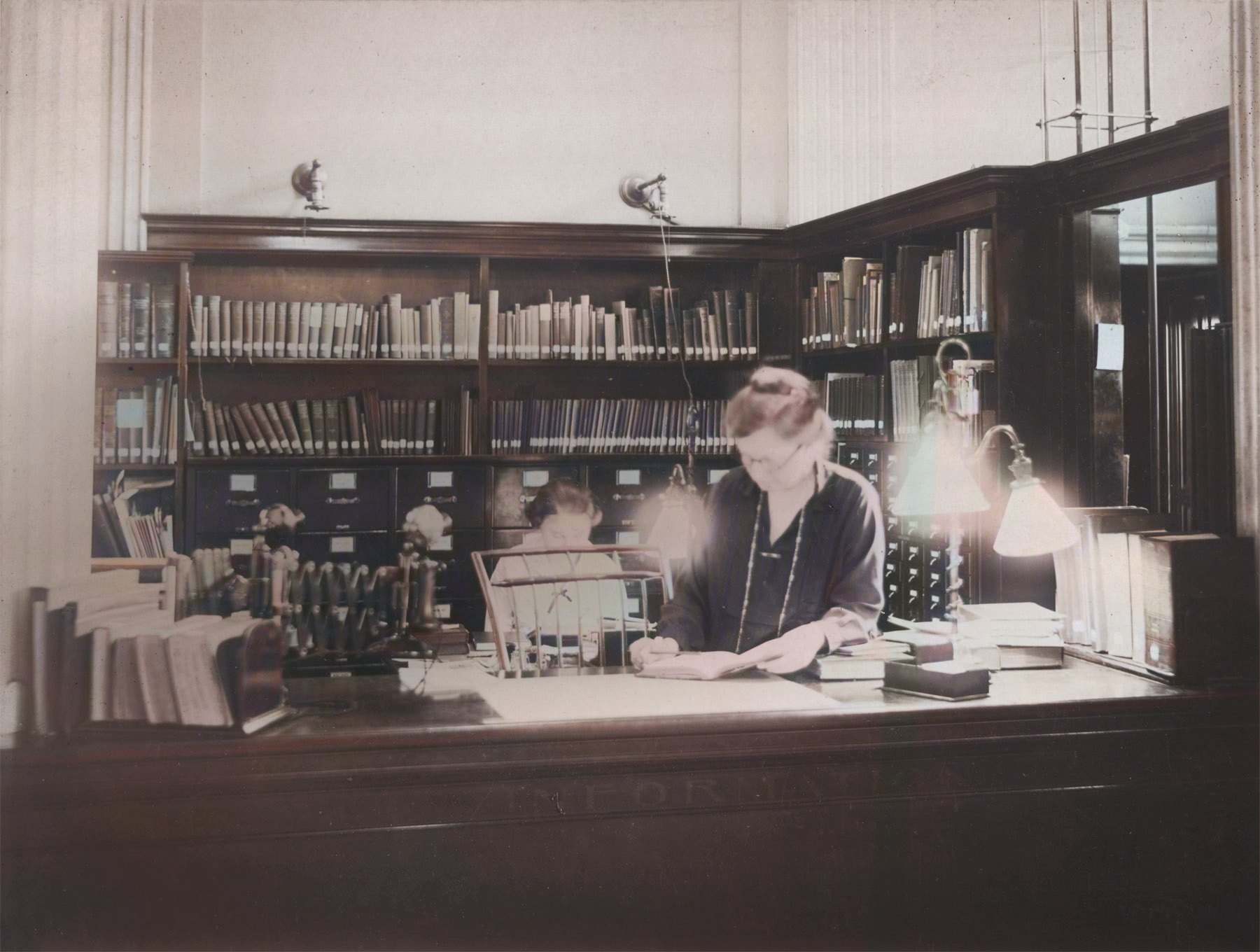
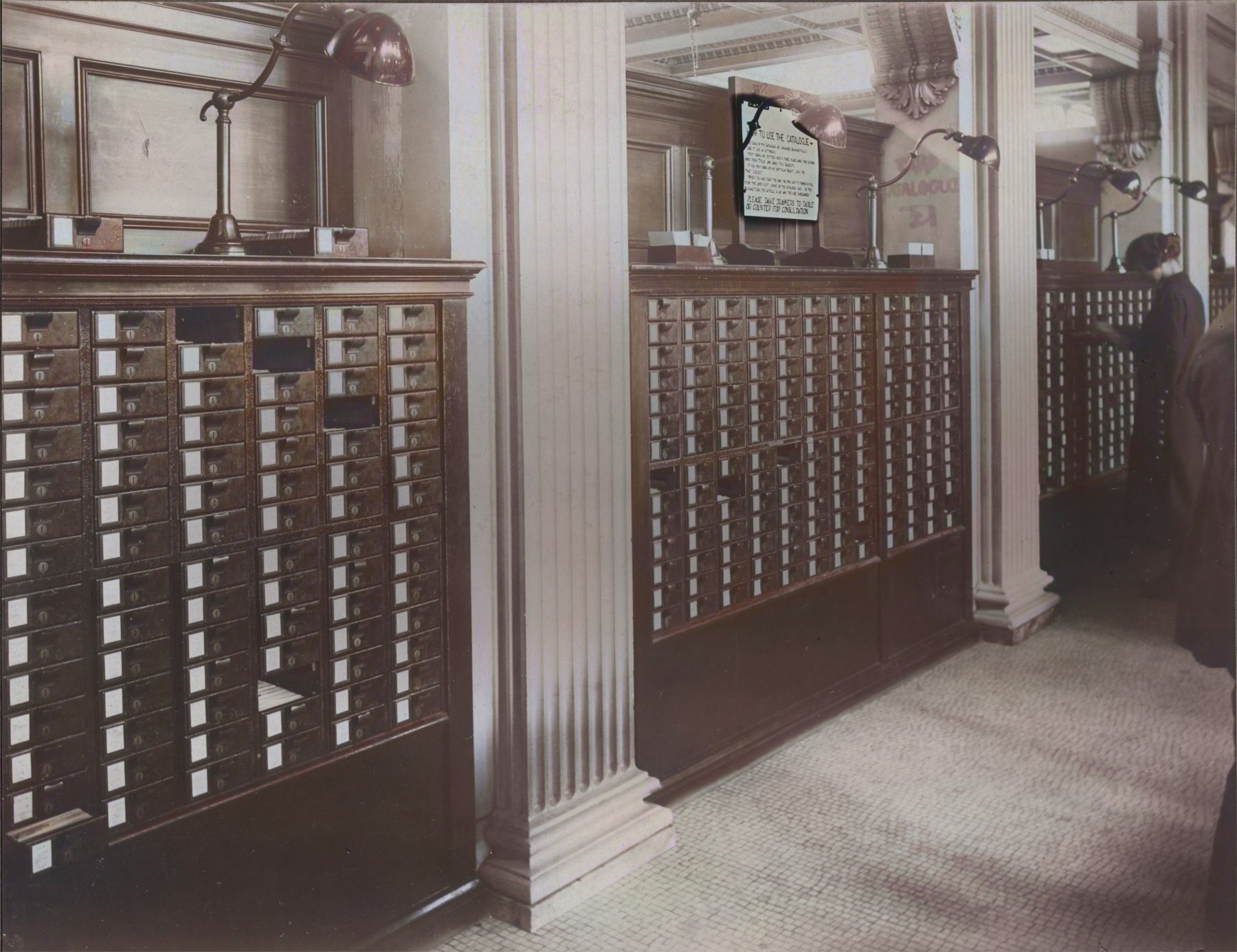

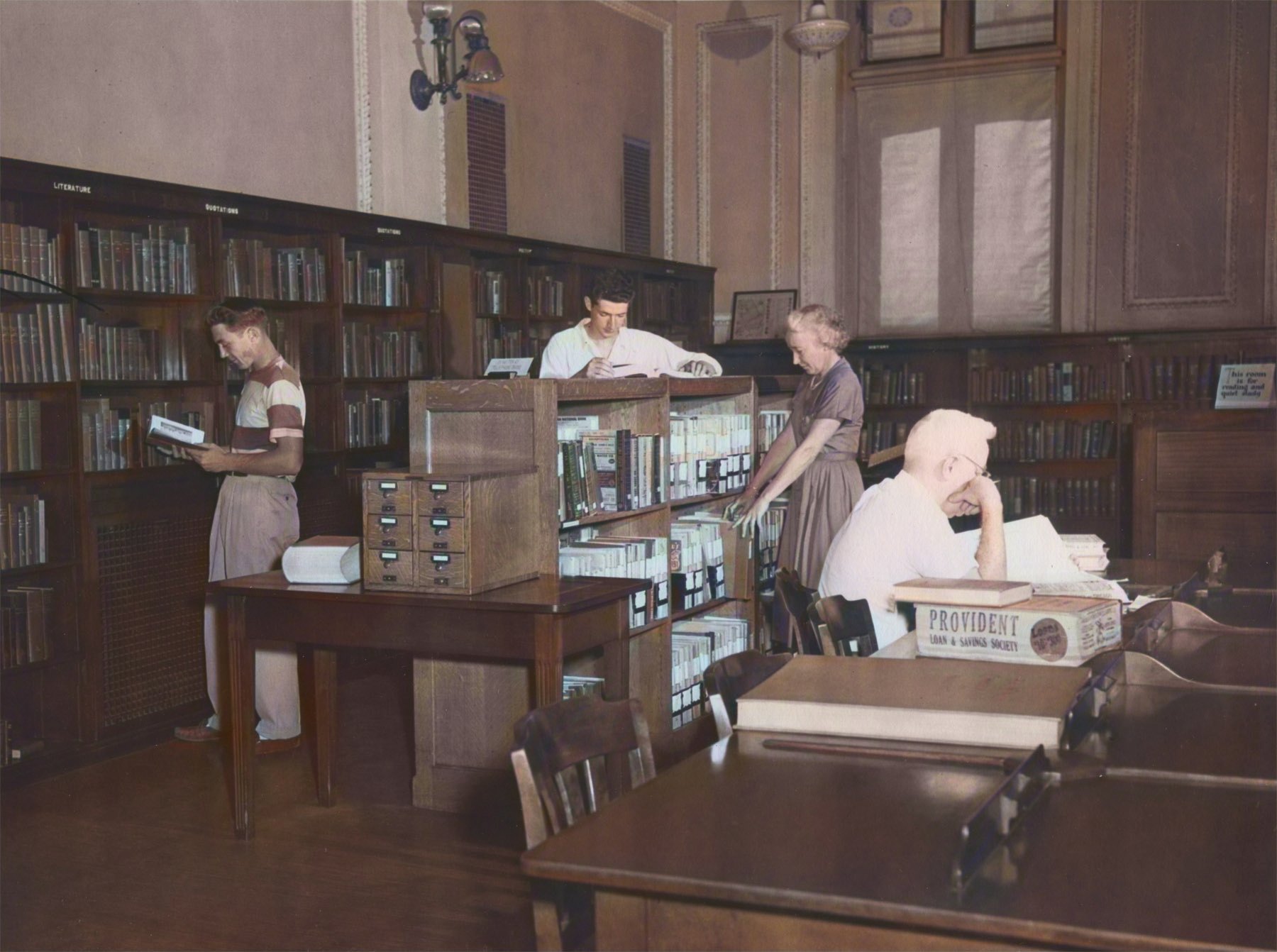
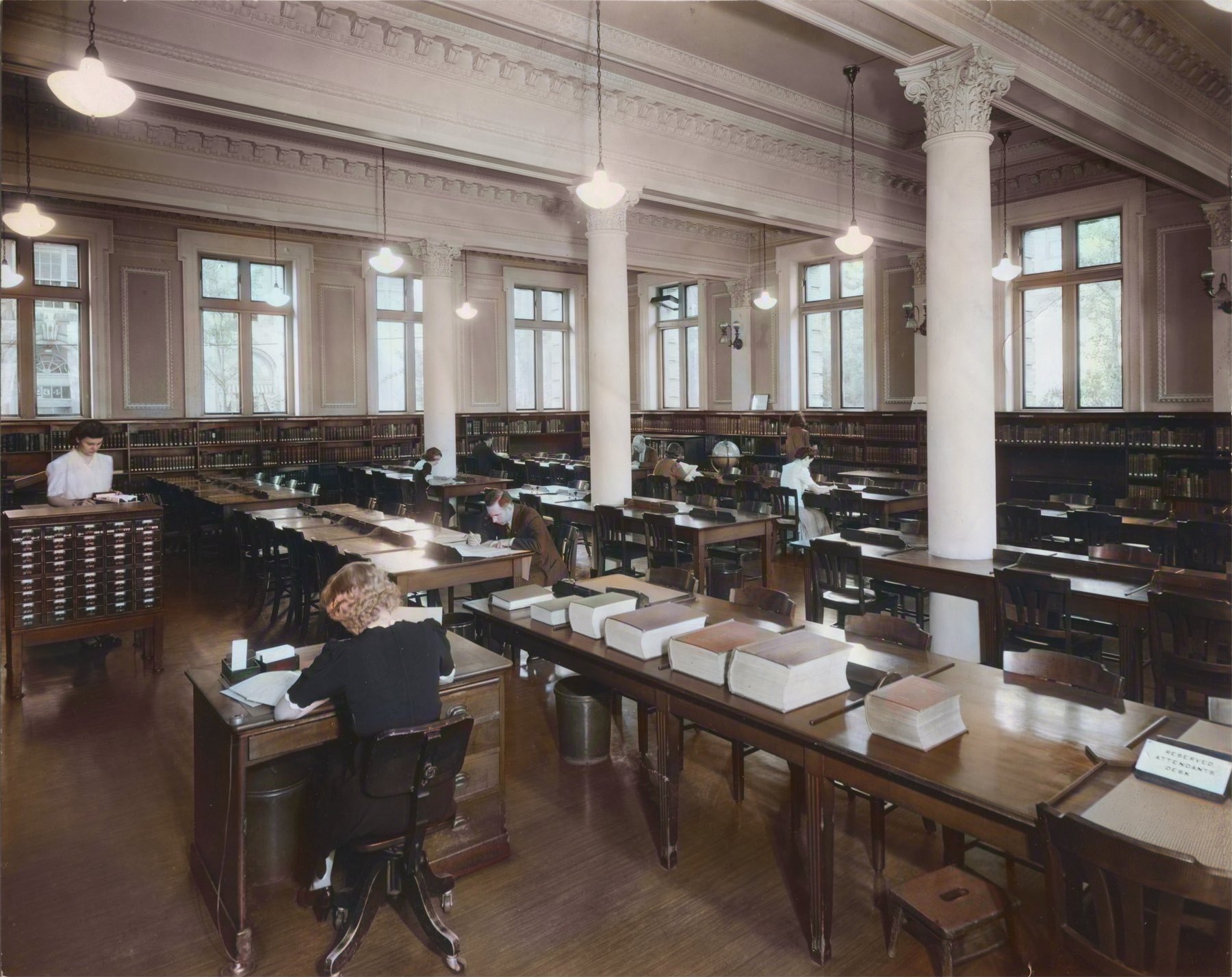


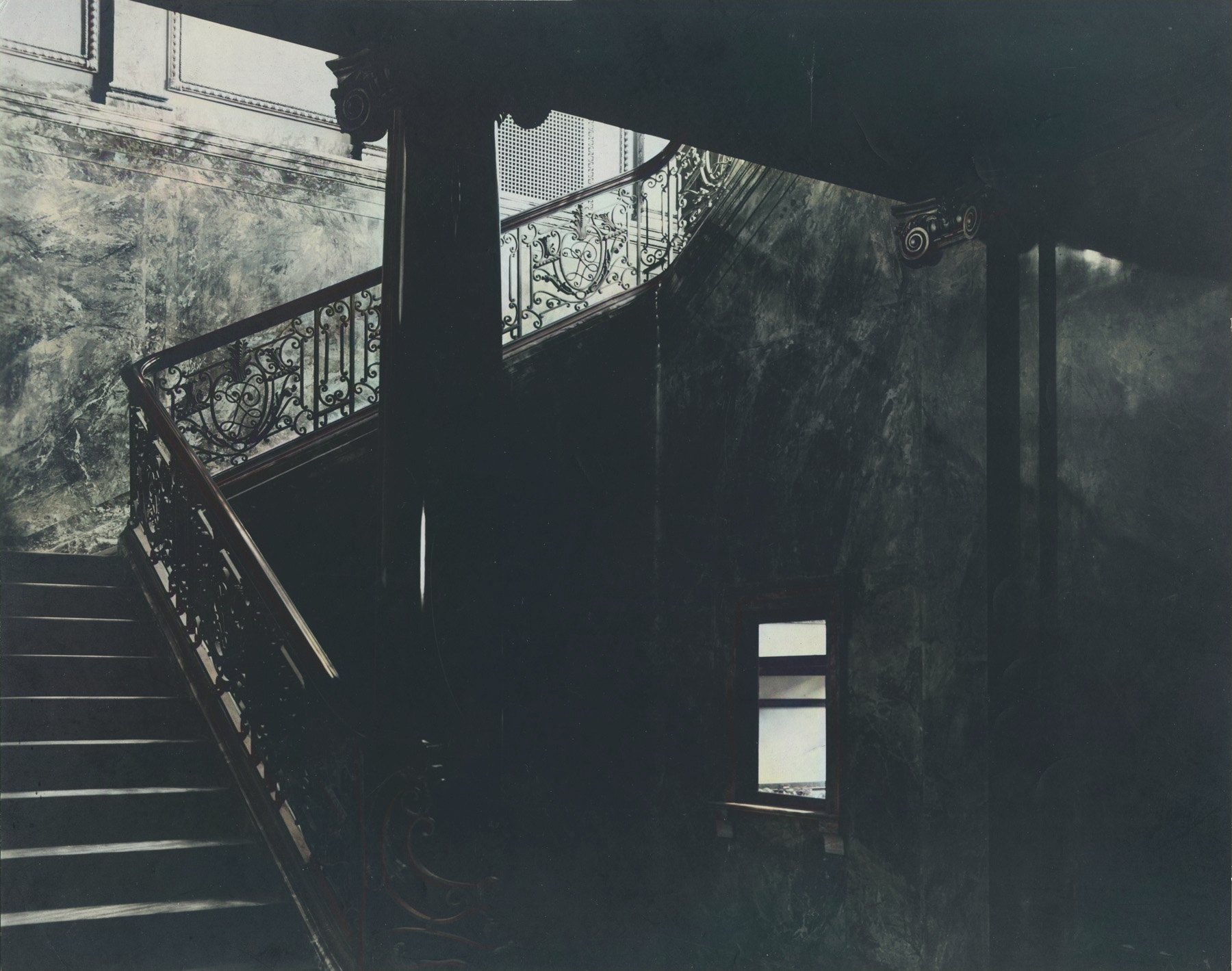
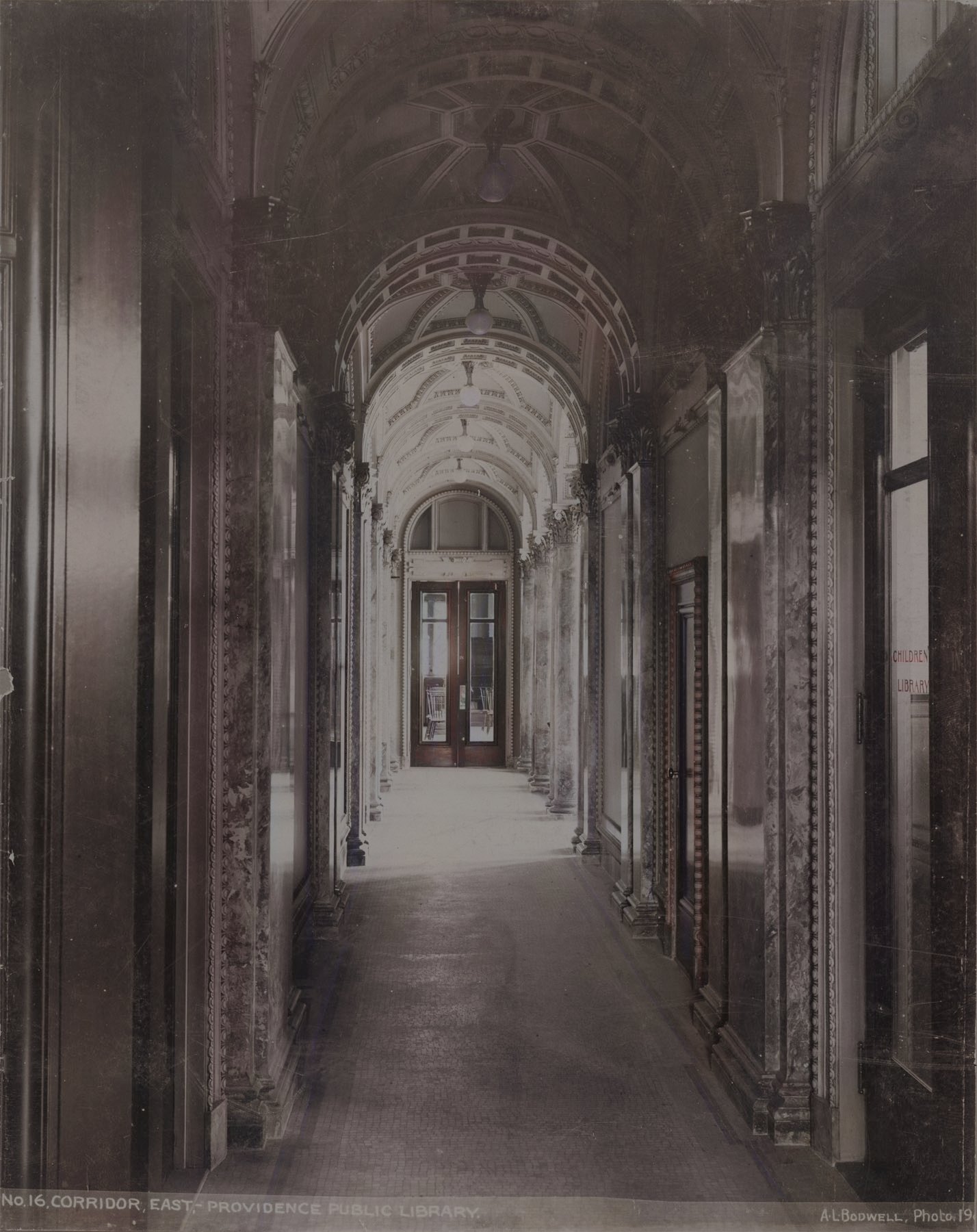



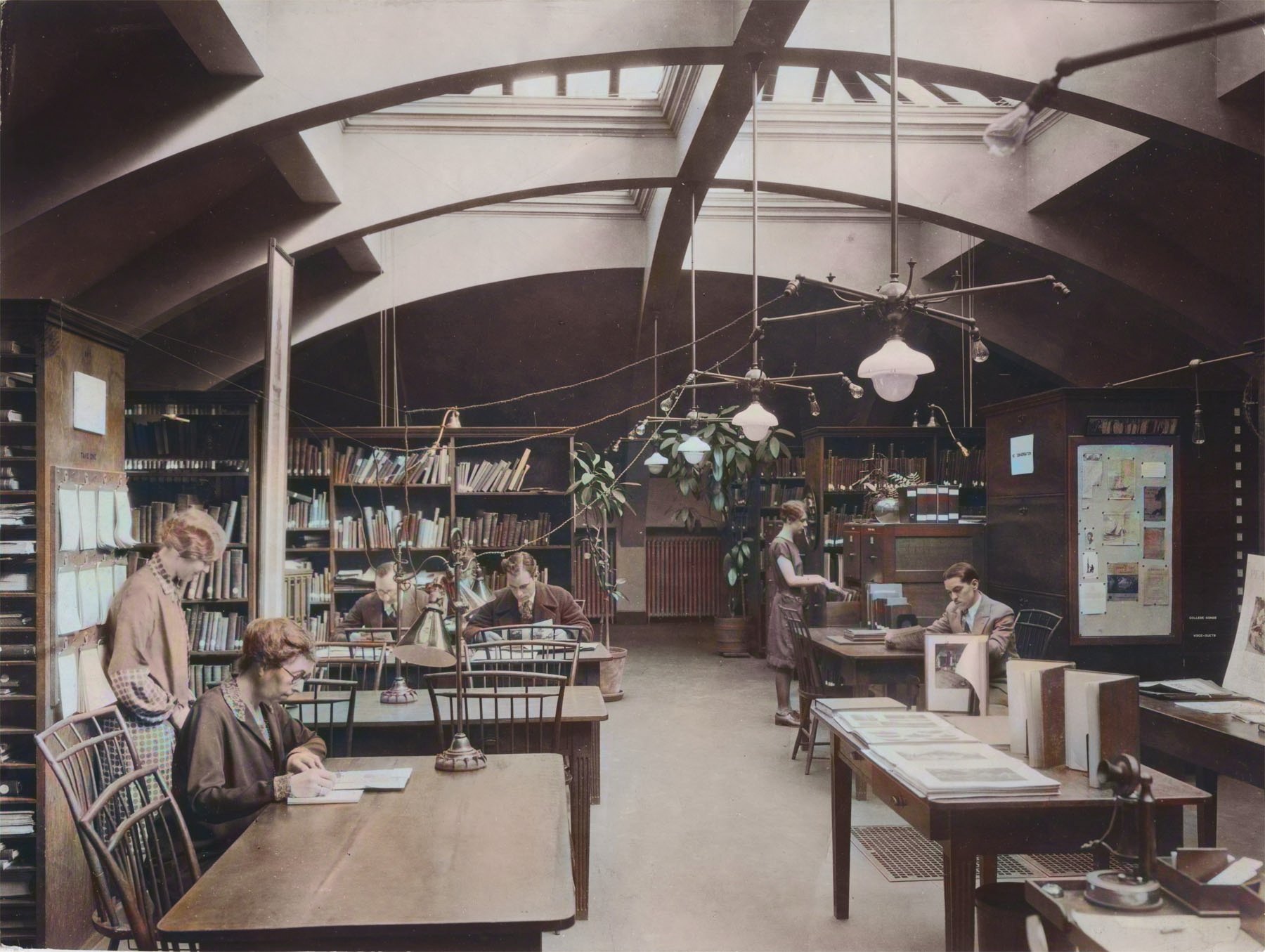
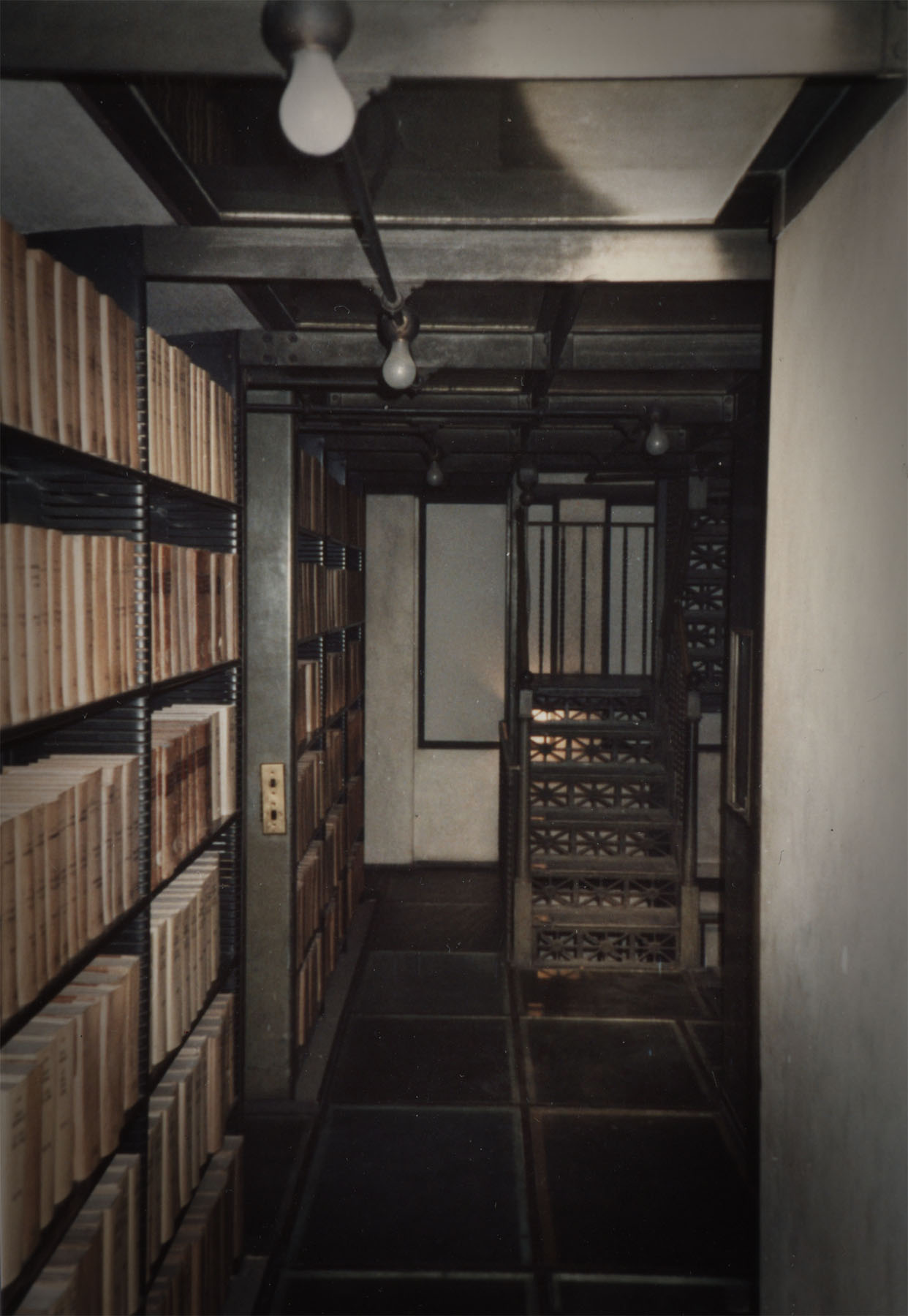
Great photos of PPL. I don’t think Winfield Townley Scott’s PPL lecture on HPL in early 1944 would have been in the lecture room depicted. Clarence E. Sherman’s THE PROVIDENCE PUBLIC LIBRARY: AN EXPERIMENT IN ENLIGHTENMENT (1937) indicates that the lecture room (part of the original 1900 design) was surrendered to the cataloging department (probably in the 1930s) (p. 45). PPL mounted an exhibit of HPL’s manuscripts, publications, etc. in connection with Scott’s lecture. Most of the material came from a group acquired by Brown University from H. Douglass Dana in January 1944. This material was acquired by Dana after the death of HPL’s aunt Mrs. Gamwell in 1941. I think Scott’s PPL lecture was probably the first public lecture on HPL and the PPL exhibit the first public exhibition devoted to HPL’s life and works. If I had a time machine, I would like to go back to listen to Scott’s lecture on HPL and to view the PPL exhibit. The photographs of the PPL periodicals room reminded me of HPL’s friend Marion Bonner (1883-1952), who was in charge of that domain. Until June 1936, she lived at The Arsdale boarding house, across the backyard from 66 College Street. Her letters from HPL are preserved at the John Hay Library.